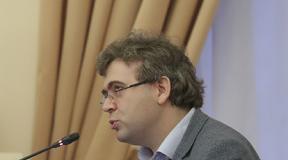Interesting facts about translators. Translator profession. Myths and legends. Bagheera is him
Even such a seemingly complex and serious profession as a translator, from time to time involves interesting and even funny moments. Starting from unusual cases in history and in translations of fundamental works, ending with funny blunders. Our specialists translation agency know this like no one else :)
7 unusual cases related to translations
1. Village of 10 thousand square kilometers
During the Age of Great Geographical Discovery, when the first settlers from Europe were just setting foot on uncharted lands, Europeans were more friendly with Indian tribes. One of the first explorers to arrive in North America once asked the natives for directions to the village. They showed them the direction, saying “Canada,” which meant “village, settlement.” Over time, a whole region consisting of several villages acquired this name. Over time, this territory expanded significantly, and only in 1867 the official name “Canada” appeared, a country formed from the British colonies in North America.
2. Bagheera – is this him?
We all know well “The Jungle Book” by R. Kipling, but not everyone knows that domestic and Russian translators “changed the gender” of one of its heroes. The panther Bagheera in the book is male. This change was made to simplify the book for children, because we are accustomed to the fact that it is a panther. A similar change was made in another of Kipling’s works - “The Cat (or, in the original, a cat) Walking by itself.”
3. Why are tights tights?
Women's tights appeared relatively recently: as we know, ladies used to wear stockings. In the 1950s, this new product appeared in the Soviet Union, it was brought from Czechoslovakia. Packages with tights were called “kalgoty punchokhove”; in Russian the analogue was “stocking leggings”. However, a simpler form - “tights” - stuck much better and soon became the norm. A funny incident happened when Russian tourists asked for tights in Czech stores. The word "tights" for the Czechs is "women's panties."
4. What do Diogenes' barrel and Pandora's box have in common?
In the myth of Pandora there is no such thing as a box. The fact is that the ancient Greeks did not have such a reality as a box. The text uses the word "pithos". This is a special vessel made of clay. It was buried in the ground almost up to the neck and food products (wine, grains) were stored in it or people were buried. It looked more like a bowl. By the way, the philosopher Diogenes also lived in pithos: the Greeks did not make barrels then.
5. How did Audi come about?
Many people know the car company Audi, but few know where its name came from. The outstanding German engineer August Horch was the founder of the company that designed cars, Horch. However, in 1909, he had some disagreements with the shareholders, and he left his company. He later created another automobile company and wanted to call it his last name. But the law did not allow this. His partner's son came up with an original idea. He played on the consonance of “Horch” and “hore” (listen), then translated the latter into Latin. It turned out to be “Audi”.
6. Hasta la vista, baby!
The famous catchphrase used in the film "Terminator" created many difficulties when translating the film itself into Spanish. In all other languages, this phrase in the film looked unusual and expressive. After thinking about this question for a long time, the translators chose the Japanese version of “Sayonara, baby!”, which translates like the Spanish equivalent: “Goodbye, baby!”
7. Year of the rabbit or cat?
We are all well aware of the Chinese horoscope, where each year is associated with some kind of animal. And you were probably surprised by the moment when the year of the Rabbit or the Cat comes. How do you know what year it is? It’s very simple: the character “rabbit” for the Chinese is read the same way as the word “cat” is read for the Vietnamese.
Articles about translation and translators
Interesting facts about translation
According to the British company Today's Translations, the African Luba language has the most difficult word in the world to translate - ilunga, which means: "a person who is ready to forgive any evil the first time, endure it a second time, but not forgive the third time." Japanese university applicants take Kit Kat chocolates with them to exams as a talisman. This became possible due to the consonance of the name and the Japanese expression “kitsu katsu” (“certainly win”).
The first translation of “Hamlet” into Russian was carried out by the writer Alexander Sumarokov and entitled “Omelet, Prince of Denmark.” Michelangelo depicted Moses with horns in his sculpture. Many art historians attribute this to misinterpretation of the Bible. The Book of Exodus says that when Moses came down from Mount Sinai with the tablets, his face “shone.” At this point in the Bible the word “koran” is used, which comes from the root krn-. But from the same root the word “keren” is formed, meaning “horn”. In modern French, there is a double spelling of the word “vodka”: wodka - for Polish and vodka - for Russian.
Black and white rhinoceroses are exactly the same - they can be dark gray, light gray, or brown. The error arose because the British colonists mistook the Dutch 'wijd' for the word 'white', when it should have been 'wide', since this species has a wide mouth. And since white rhinoceroses appeared, the species with a narrow mouth was called the black rhinoceros. When the first tanks were sent to the front, British counterintelligence started a rumor that the Russian government had ordered a batch of drinking water tanks from England. And the tanks were sent by rail under the guise of tanks (fortunately, the gigantic size and shape of the first tanks were quite consistent with this version). That is why tanks are called that (from the English tank - tank, tank). It’s interesting that we first translated this word and called the new combat vehicle “tub.”
One of the most capacious and difficult to translate is the word ‘mamihlapinatapai’ from the Yagan language. It roughly means "to look at each other in the hope that one of the two will offer to do what both parties want, but are not in the mood to do it." It is interesting that today in Chile, where Yagan was in use, only one native speaker of the language remains alive. The export name of the Lada Kalina car for Finland is Lada 119, since in translation from Finnish Kalina means crackling, roaring, rattling and knocking. Botswana's currency, pula, translates to "rain". Pula is also a greeting in one of the languages of this arid country.
Translator profession. Myths and legends.
Translator profession one of the most common in the world. However, they are rarely written about in newspapers. Therefore, as usually happens in such cases, many people have a misconception about this work. Let's describe a few myths about the translator profession. There are nine of them:
1. Every person who knows a foreign language can translate.
Yes, at the everyday level (ordering dinner, making an appointment with a partner, etc.) many people do just fine without a translator. But working with voluminous technical or marketing materials, which requires not only a general understanding of the meaning of the source, but also all the details, as well as excellent command of the Russian language, remains for now an occupation for professional specialists.
2. The demand for the translator profession is falling.
On the one hand, the number of people who speak a foreign language has become quite large. But the intensity of international contacts and the associated volume of translated documentation is growing much faster. In recent years, the volume of translations, both oral and written, has increased significantly. The army of translators has also grown. The huge number of people wishing to receive a linguistic education confirms the high demand for the profession.
3. Nothing has changed in this profession for centuries.
The translator's workplace and the technologies it uses have changed radically in just a few years. Little by little, electronic dictionaries replaced shelves lined with paper lexicons. The emergence of special software for translators, which uses previously translated texts, has increased productivity by about 40%.
4. To perform written translations, you must graduate from a linguistic university.
However, most professional technical translators has a higher education in natural sciences, and only then his passion for language led to receiving a second linguistic education. Many talented translators generally make do with an “institutional” or “special school” foreign language, and owe their success primarily to practice.
5. Only a specialist can adequately translate complex technical text.
Of course, a specialist who has worked in any field for years knows its specifics and terminology best. But in the field of written translation, a technology for interaction with the customer has developed that allows high quality translation even the most highly specialized texts! This work requires a thorough study of specialized literature, customer reference materials, many hours of Internet searches, as well as the compilation of glossaries and clarification of controversial issues. But, of course, a high-class translation can be done only if the translator has a specialized education, broad outlook and experience.
6. The translator gets money easily.
Translator- this is work for 8-10 hours a day, requiring extreme composure and accuracy. Add to this the frequent “rush jobs” if the translation should have been done “yesterday”... Such work requires constant self-education and professional development. A translator's bread is not the easiest...
7. Translation is not a creative profession.
Despite the emergence of automated translation systems using artificial intelligence technologies, translation has been and remains a creative profession. The translation of even a short phrase allows for several possibilities. Finding an adequate meaning of a term, which is often absent in the Russian language, can sometimes take hours, and one can work endlessly on the equivalent of a foreign language slogan or literary text.
8. The role of a translator in the modern business environment is low.
Let us pay attention to the work of the interpreter. During the negotiation process, he does not just translate from one language to another, he creates an atmosphere of mutual understanding and partnership. Translator helps to achieve understanding not just among people who speak different languages, but also among people from different cultures who may have very different ideas about how to do business. The participation of a good linguist increases the chances of successful negotiations.
9. Translations are a small business.
To satisfy the diverse wishes of customers, complete large-scale projects in the shortest possible time, introduce modern technologies and control systems, leading translation companies forced to enlarge. The number of their full-time employees exceeds 50, and the number of freelance translators is in the hundreds. Translation volumes can reach hundreds of thousands of pages per year!
| - | Translation of technical texts |
| - | Translation of the site into English, Russian |
| - | Legal translation |
| - |
It is not easy to be a translator, and if you need a notarized translation or just a written translation, then it is better to contact specialized translation agencies; the translation agency "Perevod.RU" will be happy to help you with this. It is not enough to simply translate accurately; you need to know foreign culture and the intricacies of the language. We invite you to familiarize yourself with interesting facts about the intricacies of translation:
- Khrushchev’s famous phrase “I’ll show you Kuzka’s mother!” at the UN Assembly it was translated literally - “Kuzma’smother”. The meaning of the phrase was completely incomprehensible, and this made the threat take on a completely ominous character. Subsequently, the expression “Kuzma’smother” was also used to refer to the atomic bombs of the USSR.
- In Rudyard Kipling's original The Jungle Book, Bagheera is a male character. Russian translators changed Bagheera's gender because the word "panther" is feminine. The same transformation occurred with another Kipling character: the cat became, in the Russian translation, “The cat that walks by itself.”
- The well-known airline American Airlines found itself in a tricky situation, which, having installed new leather seats in the cabins of its planes, communicated this to Mexican customers using the slogan “FlyinLeather!”, which translated means “Fly in leather!” However, when translated into Spanish, the slogan sounded like “Fly naked!”
- The Coca-Cola company also experienced translation difficulties during a promotion in China. The fact is that in Chinese, Coca-Cola means “Bite the Wax Tadpole”! Therefore, the name of the company’s products in China sounds like “Coku Cole,” which translated from Chinese means “Happiness in the mouth.”
- The beer company Coors used the slogan “TurnItLoose!” to advertise its products in the United States. (Become Free!). However, in Latin America, when literally translated into Spanish, such a call means “Suffer from Diarrhea!”
- The automobile company General Motors failed to promote the new Chevrolet Nova model in Latin America. The fact is that the name of the car "Nova" in Spanish means "Unable to Move."
- The word “mother” in almost all world languages begins with the letter “m”.
our clients

“The joint venture SEBA ENERGO was created in 1995. The founders are the Open Joint Stock Company MOSENERGO, the largest regional generating company in the Russian Federation, and the West German holding Seba KMT, a world leader in the production of equipment for quickly identifying fault locations in underground utilities. .
The main activities of the SEBA ENERGO JV in the CIS market include:
Development and production of specialized laboratories for searching for places of damage and leaks in water pipelines and heating mains, as well as places of damage to energy and communication cables based on Russian and imported cars, including the necessary instruments and equipment in the laboratories.
Modernization of mobile laboratories previously supplied by Seba Dynatronic and Hagenuk KMT factories to the countries of the former USSR.
Development and production of special-purpose mobile vehicles.

LLC "" is a group of companies that successfully and stably operate in the field of providing a range of services, such as customs clearance of goods, organization of multimodal transportation, as well as forwarding at the port, provision of warehousing services.
The RFK-GROUP group of companies deservedly occupies a stable place in the field of cargo transportation. The successful work of the company is based on providing exceptionally high-quality services on favorable terms. RFC group offers its clients assistance in cargo transportation both in Russia and abroad.



















